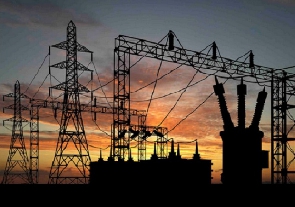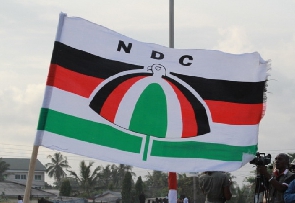Opinions of Tuesday, 5 September 2023
Columnist: Dr. Elikplim Kwabla Apetorgbor
Unveiling the cost implications of power purchase agreements in a deregulated energy market
Power purchase agreements (PPAs) constitute a cornerstone of energy transactions in deregulated markets, shaping the financial landscape of power generation and consumption. This article delves into the multifaceted cost implications of PPAs within a deregulated energy market, exploring the intricate web of pricing dynamics, risk management, and economic considerations that underpin these agreements.
By dissecting the factors that influence costs for both producers and consumers, this paper offers a comprehensive analysis of the financial intricacies associated with PPAs in the context of a deregulated market.
The transition towards deregulated energy markets has introduced a new era of dynamism and complexity, redefining the interactions between power producers and consumers. At the heart of this transformation lie Power Purchase Agreements (PPAs), contractual arrangements that govern the terms of electricity exchange. While PPAs transcend mere energy transactions, their cost implications stand as a pivotal force that shapes investment decisions, pricing strategies, and overall market dynamics.
Pricing Dynamics in Deregulated Markets
In a deregulated energy market, pricing dynamics are driven by the interplay of supply and demand, shaped by market participants ranging from power generators to retailers and end-users. PPAs serve as critical tools for producers to secure a market for their generated electricity, providing revenue certainty in a fluctuating pricing environment. For consumers, PPAs offer a means to secure a stable supply of energy at agreed-upon rates, shielding them from the volatility of spot market prices.
The cost implications of PPAs within a deregulated market are intimately tied to pricing structures, which can encompass fixed, variable, indexed, or hybrid models. These structures determine how costs are distributed between producers and consumers, impacting long-term financial commitments and budget predictability.
Risk Management and Hedging Strategies:
In a deregulated market, the inherent risk of price volatility necessitates effective risk management strategies. Producers and consumers alike turn to PPAs as instruments for risk mitigation, leveraging them to hedge against adverse market movements.
For producers, PPAs provide revenue certainty by locking in prices for their generated electricity, safeguarding against downward price shifts that could erode profitability. Conversely, consumers utilize PPAs to manage exposure to price spikes, ensuring stable energy costs and guarding against budgetary uncertainty.
Financial Viability and Investment Decisions:
The financial viability of power generation projects hinges on the terms and conditions of PPAs. For producers, the revenue generated through PPAs plays a decisive role in determining the feasibility of investing in new capacity or upgrading existing facilities. The negotiation of favorable pricing terms and contract durations is integral to attracting investment and securing financing for energy projects.
Consumers, too, must carefully assess the cost implications of PPAs when considering energy procurement strategies. The ability to secure competitively priced PPAs can significantly impact a consumer's energy expenditure and overall financial health.
Balancing Market Dynamics and Contractual Obligations:
The fluidity of a deregulated energy market introduces a delicate equilibrium between market dynamics and the contractual obligations embedded within PPAs. Energy supply and demand fluctuations, changes in regulatory policies, and technological advancements all influence the cost implications of PPAs over time.
For both producers and consumers, the strategic negotiation of PPA terms and the flexibility to adapt to changing market conditions are paramount to ensuring optimal cost management and sustained profitability.
Navigating the Financial Terrain:
In the complexity of a deregulated energy market, power purchase agreements emerge as key instruments that intertwine financial stability, risk mitigation, and market participation. The cost implications of PPAs extend beyond mere financial transactions, influencing investment decisions, market behavior, and the overall trajectory of energy systems.
Understanding and effectively managing the cost implications of PPAs within a deregulated market requires a nuanced understanding of pricing dynamics, risk management strategies, and the intricate interplay between market forces and contractual commitments. By navigating this complex terrain with foresight and expertise, market participants can harness the potential of PPAs to drive economic growth, foster innovation, and fortify the pillars of a dynamic and resilient energy landscape.
Power Purchase Agreements (PPAs) in an unbundled electricity sector can have various cost implications for different stakeholders involved. Here are some key cost considerations related to PPAs in such a sector:
Generation Costs:
PPAs typically define the pricing mechanisms for purchasing electricity from generators. The terms of the PPA can directly impact the generation costs for the purchasing entity, affecting their overall expenses for procuring electricity.
Fixed vs. Variable Costs:
PPAs can include fixed capacity payments and variable energy payments. Fixed capacity payments provide revenue certainty for generators but can represent a fixed cost for purchasers, irrespective of actual consumption (take or pay). Variable energy payments are tied to actual energy output (take and pay), which can introduce cost fluctuations based on consumption.
Tariff Structure:
The terms of the PPA can influence the tariff structure for end consumers. If the purchasing entity is a utility, the cost of electricity procured through PPAs can influence the tariffs charged to consumers, potentially impacting their electricity bills.
Fuel Price Risk:
Depending on the type of power generation (e.g., fossil fuels, renewables), PPAs can introduce varying degrees of exposure to fuel price risk. Generators relying on fossil fuels may have higher cost volatility due to fluctuations in fuel prices, which can impact the price of electricity under the PPA.
Renewable Energy Incentives:
In many cases, PPAs are used to support renewable energy projects. The terms of the PPA can include incentives, such as feed-in tariffs or renewable energy certificates, which may affect the overall cost structure for purchasers while promoting green energy adoption.
Contract Duration:
The duration of a PPA can impact costs. Longer-term contracts may provide stable pricing but could lock purchasers into prices that become less competitive over time due to changing market dynamics.
Investment Costs:
Generators may invest in new infrastructure or technologies to meet the terms of the PPA. These investment costs could influence the overall cost structure of the PPA and, consequently, the pricing offered to purchasers.
Financial Risk and Creditworthiness:
The financial risk of the generator and the purchaser can affect the terms of the PPA. Generators with higher perceived risk might seek higher prices in the PPA to compensate, while purchasers with weaker credit profiles may face challenges securing favorable terms.
Regulatory Compliance:
PPAs often involve compliance with regulatory requirements, such as renewable energy targets or emission reduction goals. Meeting these obligations could lead to additional costs that impact the overall cost structure of the PPA.
Transmission and Distribution Costs:
The location of the generator and the purchaser can influence transmission and distribution costs associated with delivering the electricity. These costs may be factored into the PPA and affect overall pricing.
Market Price Dynamics:
In markets with wholesale electricity prices, PPAs may be influenced by market price dynamics. If the PPA price is set higher than prevailing market prices, the purchaser could incur higher costs.
Penalties and Termination Costs:
PPAs may include penalties for failure to meet contractual obligations and termination costs. These costs can impact both parties if the agreement is terminated prematurely.
In summary, the cost implications of PPAs in an unbundled electricity sector can vary widely based on the terms of the agreement, the type of generation, market conditions, and the regulatory environment. Careful negotiation, planning, and risk assessment are essential to ensure that PPAs align with the financial goals and strategies of all involved stakeholders.
Dr. Elikplim Kwabla Apetorgbor
(CEO, Independent Power Generators, Ghana)













